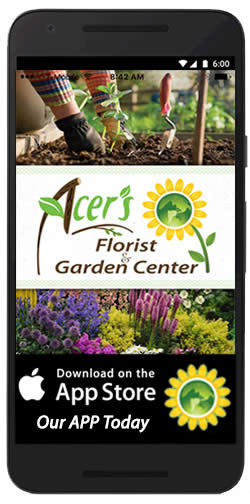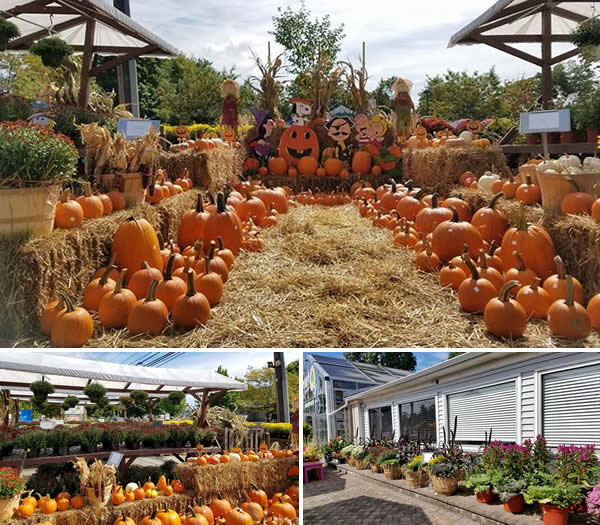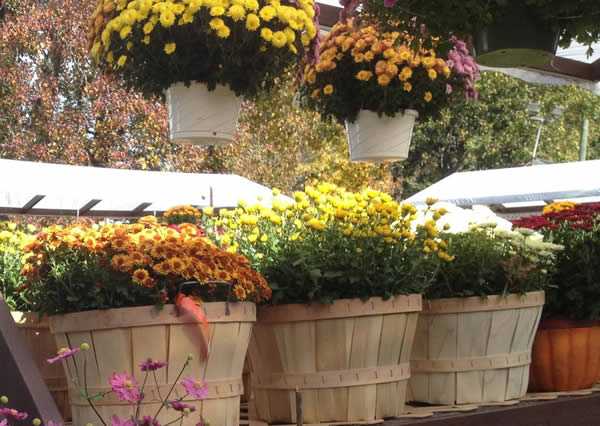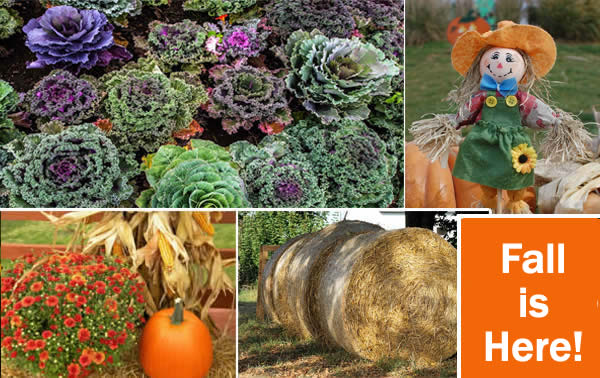Do you know that Acer's offers free
computerized landscape design?
Call (631) 343-7123 or send pics to Jim@acersgardencenter.com.
|

|
Download our App today!
Get your first reward when you download!
Tap the App For:
- A list of services and products
- Exclusive specials and offers
- Updates and notifications
- Digital punch card rewards |

Click Here |

Click Here
|
|

- Cut back perennials and rake area around them; leaving diseased or insect-laden foliage can cause problems next year.
- Weed all areas and dispose of them in the trash (not the compost
pile) to discourage weeds in the future.
- When your annual plants have died back remove them. Add compost,
manure, lime and gypsum to the bed to enrich the soil for next year.
- Edge the grass along planting beds--one less thing to do next
spring!
- Plant early-spring flowering bulbs. Plant them in groupings instead of rows; not only does it look more natural, but they will be less susceptible to wind damage.
- Remove all faded flowers from plants like roses and hydrangeas, rake
up all leaves and tie up the branches. This will help protect your
plants from snow damage.
- Thin out about 1/3 of the oldest branches of flowering shrubs like
forsythia, lilac, spiraea and potentilla to promote better bloom and
a nicer shape next spring.
- Dig up tender bulbs, tubers and corms such as dahlias, canna lilies,
caladium and gladiolus. It’s a good idea to label them as to
type, color and height to make your life easier when replanting them
next spring. Sprinkle them with a rose and flower garden dust to
discourage insects. Store them where they will not freeze in paper
bags or boxes.
- Collect leaves to shred and add to the compost pile (if you don’t
already have a pile, now is a great time to start one).
- Clean up all fallen fruits to reduce disease and pest problems.
- Work weed-free steer manure or compost into asparagus beds.
- Dig up geraniums and bring them indoors for the winter.
- Clean birdbaths, fountains and clay and ceramic pots and move them
to a protected place for the winter.
- Move any garden statuary, garden signs and other patio decorations
to a protected place for the winter.
- Clean out your vegetable garden, disposing of all plants, weeds and
old veggies. For a great source of organic material next spring,
plant winter rye in the cleaned vegetable garden. In April, simply
cut the grass then till the remaining grass and roots into the soil!
- Start some pots of paper white narcissus for holiday forcing. They
make great hostess gifts!
- Fertilize the lawn one last time to prepare it for the upcoming
winter.
- If you are decorating with pumpkins, rub a little Vicks on them--this keeps the squirrels and chipmunks from feasting on them.
- Indian corn used as fall decorations can be protected from blue jays
by simply spraying with shellac or hair spray.
- Drain hoses of water, coil them and tie them together to prevent
them from being filled with ice.
Click to print this article.
|

What's the difference between a daffodil and a narcissus?
Answer:
There is no difference. The two words are synonyms. Narcissus is the botanical name for daffodils, just as ilex is for hollies.
Daffodil is the common name for all members of the genus Narcissus, and its use is recommended by the American Daffodil Society at all times other than in scientific writing.
In some parts of the country, any yellow daffodil is called a jonquil, usually incorrectly. As a rule, but not always, jonquil species and hybrids are characterized by several yellow flowers, strong scent, and rounded foliage.
But who really cares? They are all lovely flowers--and we say, "Call them whatever makes you happy!"
Click to print this article.
|
|














